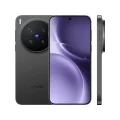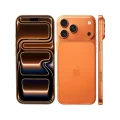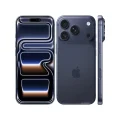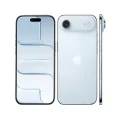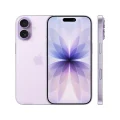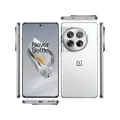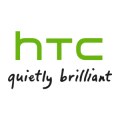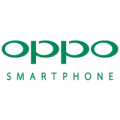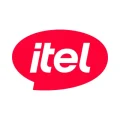- Home
- All Products
- Google Pixel
- Google Pixel C
Google Pixel C
-
Battery: Li-Po 9240 mAh
-
RAM: 3GB, 3GB
-
Storage: 32GB, 64GB
-
Display: IPS LCD, 10.2 inches
-
Camera: Rear 8 MP and Front 2 MP
-
OS: Android 6.0.1 (Marshmallow), upgradable to Android 8.0 (Oreo)
Full Specifications
Price
| Official | Not Available |
| Unofficial | 39999 BDT 3/64 GB |
General
| Model | Google Pixel C |
| Announced | 2015, September 29 |
| Released | 2015, December 08 |
| Status | Discontinued |
| Price | 39999 BDT 3/64 GB |
Design
| Dimensions | 242 x 179 x 7 mm (9.53 x 7.05 x 0.28 in) |
| Weight | 517 g (1.14 lb) |
| SIM SIM (Subscriber Identity Module) is a small card that contains mobile network subscriber's account information. This allows the phone using the card to attach to a mobile network. The SIM card is most commonly associated with GSM and UMTS mobile networks. Moving a SIM card from one phone to another allows a subscriber to switch mobile phones without having to contact their mobile network carrier. SIM cards can also be used by a phone to store limited amounts of data, such as phone numbers and text messages. | No |
| Colors |
Silver Aluminum |
Display Specification
| Display Type Display Technology => A number of display technologies and types used in mobile phones => TFT (Thin Film Transistor), IPS (In-Place Switching), OLED (Organic Light Emitting Diode), AMOLED (Active-Matrix Organic Light-Emitting Diode), Super AMOLED (an even advanced version of AMOLED), Resistive Touchscreen (Resistive touchscreens contain two layer of conductive material with a very small gap between them which acts as a resistance), Capacitive Touchsceen (Capacitive touchscreen technology consists of a layer of glass coated with a transparent conductor) | IPS LCD |
| Size | 10.2 inches, 313.8 cm2 |
| Resolution | 2560 x 1800 pixels |
| Pixel Density Pixel Density (PPI) is refers to the concentration of pixels on a particular display, measured in pixels per inch (ppi). Pixel density is calculated by dividing the diagonal pixel resolution of a display by its diagonal size, higher pixel density better display quality. | 308 ppi density |
| Features | 72.4% screen-to-body ratio |
Platform
| Operating System OS => Every computer system run on a base software called Operating System (OS). Operating System controls all basic operations of the computer (such as smartphone, PDAs, tablet computers and other handheld devices). The Operating System allows the user to install and run third party applications (apps), apps are used to add new functionality to the device. | Android 6.0.1 (Marshmallow), upgradable to Android 8.0 (Oreo) |
| Chipset Chipset is a group of integrated circuits designed to perform one or a more dedicated functions, often with real time computing constraints, Popular smartphones are equipped with more advanced embedded chipsets that can do many different tasks depending on their programming. | Nvidia Tegra X1 |
| CPU CPU (Central Processing Unit) mostly known as processors, CPU processes instructions in order to carry out certain functions that make your device operate properly. Processors are often described as the brain of computers, smartphones and tablets, Smartphones and tablets rely on processors to carry out their every task, Processors are an incredibly important factor in selecting any type of computing device, including your smartphone. | Quad-core 1.9 GHz |
| GPU GPU (Graphics Processing Unit) is a single-chip processor designed to rapidly manipulate and alter memory to accelerate the creation of images in a frame buffer intended for output to a display, This includes things such as lighting effects, object transformations, and 3D motion. | Nvidia Maxwell |
Main Camera
| Camera Setup | Single |
| Resolution |
8 MP, f/2.4 |
| Video | 1080p@30fps |
Selfie Camera
| Camera Setup | Single |
| Resolution |
2 MP |
| Video | N/A |
Network & Connectivity
| Technology | No cellular connectivity |
| Wi-fi Wi-Fi is a popular wireless networking technology using radio waves to provide high-speed network connections that allows devices to communicate without cords or cables, Wi-Fi is increasingly becoming the preferred mode of internet connectivity all over the world. | Wi-Fi 802.11 a/b/g/n, dual-band, Wi-Fi Direct |
| Bluetooth Bluetooth is a wireless communications technology for exchanging data between mobile phones, headsets, computers and other network devices over short distances without wires, Bluetooth technology was primarily designed to support simple wireless networking of personal consumer devices. | 4.1, A2DP |
| NFC NFC (Near field communication) is a set of standards for smartphones and similar devices to establish peer-to-peer radio communications with each other by touching them together or bringing them into proximity, usually no more than a few inches. | No |
| Positioning | N/A |
| FM Radio | No |
| USB | USB Type-C 3.0 |
| 2G Network |
N/A |
| 3G Network |
N/A |
| 4G Network |
N/A |
Battery
| Battery Type Battery Type => Cell phones run on various kinds of batteries depending on the manufacturer, phone size or shape and features. There are basically four types of cell phone batteries => Lithium Polymer, Lithium Ion, Nickel Metal Hydride and Nickel Cadmium. | Li-Poly (Lithium Polymer) |
| Capacity Battery Capacity is a measure (typically in Amp-hr) of the charge stored by the battery, and is determined by the mass of active material contained in the battery. The battery capacity represents the maximum amount of energy that can be extracted from the battery under certain conditions. | 9240 mAh |
| Removable | No |
| Wireless Charging Wireless Charging (Inductive Charging) uses an electromagnetic field to transfer energy between two objects. This is usually done with a charging station. Energy is sent through an inductive coupling to an electrical device, which can then use that energy to charge batteries or run the device. | No |
Multimedia
| Loudspeaker | Yes, with stereo speakers |
| Audio Jack | Yes |
Storage
| Card Slot Memory Card Slot is a special slot for inserting a memory card. Memory cards allow you to expand the phone's built-in memory, A memory card (sometimes called a flash memory card or a storage card) is a small storage medium used to store data such as text, pictures, audio, and video, for use on small, portable or remote computing devices such as mobile phones, mp3 players, digital cameras. | No |
| Internal Storage Internal Storage is a data storage space (flash memory) mostly used in smartphones, tablets and other electronic devices where operating system, apps, music, photos, videos, files and other user data Is stored. |
32GB 3GB RAM, 64GB 3GB RAM |
Sensors
| Fingerprint | No |
| Other Sensors | Accelerometer, gyro, proximity, compass |
About the Google Pixel C
The Google Pixel C is a premium Android tablet designed for productivity and entertainment. It features a 10.2-inch high-resolution AMOLED display, delivering sharp and vibrant visuals for streaming, gaming, and browsing. Powered by the NVIDIA Tegra X1 processor, it ensures smooth performance for multitasking and apps.
With 32GB or 64GB of internal storage, up to 10 hours of battery life, and an optional magnetic keyboard, the Pixel C is perfect for work, study, or media consumption on the go. Its sleek aluminum body adds durability and style, while regular Android updates from Google keep the tablet secure and up-to-date.
Whether for professional use, creative tasks, or entertainment, the Google Pixel C offers a premium, portable, and reliable Android experience.
Main Key Features
- Display: 10.2-inch AMOLED screen with 2560 x 1800 resolution for sharp and vibrant visuals.
- Processor: NVIDIA Tegra X1 processor for smooth multitasking and gaming performance.
- Storage Options: 32GB and 64GB internal storage options.
- Operating System: Android OS with timely updates for security and features.
- Battery Life: Up to 10 hours of usage on a single charge.
- Keyboard Support: Optional magnetic keyboard for enhanced productivity.
- Camera: 8MP rear and 2MP front cameras for casual photography and video calls.
Pros & Cons
Pros:
- Premium aluminum design with a lightweight body.
- High-resolution AMOLED display with vibrant colors.
- Strong performance for multitasking and media consumption.
- An optional keyboard enhances productivity.
- Regular Android updates directly from Google.
Cons:
- Limited storage expansion (no microSD support).
- Camera performance is basic compared to modern tablets.
- The price is higher than some competitors.
- Accessories (like the keyboard) are sold separately.
Why Choose This Tablet?
The Google Pixel C is perfect for users who want a premium Android tablet experience with strong performance, a high-quality display, and tight integration with Google apps. It’s ideal for professionals, students, and content consumers who value portability and productivity.
Opinion
The Google Pixel C stands out as a reliable and stylish Android tablet. While it may not compete with high-end iPads in terms of cameras, it excels in display quality, build, and software experience. If you’re looking for a sleek tablet that handles both work and entertainment effectively, the Pixel C is a solid choice.
See Another Model:
FAQs about Google Pixel C
Q: Does the Pixel C support a keyboard?
A: Yes, the Pixel C has an optional magnetic keyboard for improved typing and productivity.
Q: Can I expand storage on the Pixel C?
A: No, the tablet does not support microSD cards.
Q: How long does the battery last?
A: The Pixel C offers up to 10 hours of battery life under typical usage.
Q: Is the Pixel C good for gaming?
A: Yes, with the NVIDIA Tegra X1 processor, it can handle most Android games smoothly.
Q: Does it receive Android updates?
A: Yes, as a Google device, the Pixel C receives regular Android updates and security patches.
Give Your Review
Disclaimer Note
You can write your own disclaimer from APS Settings -> General -> Disclaimer Note.
